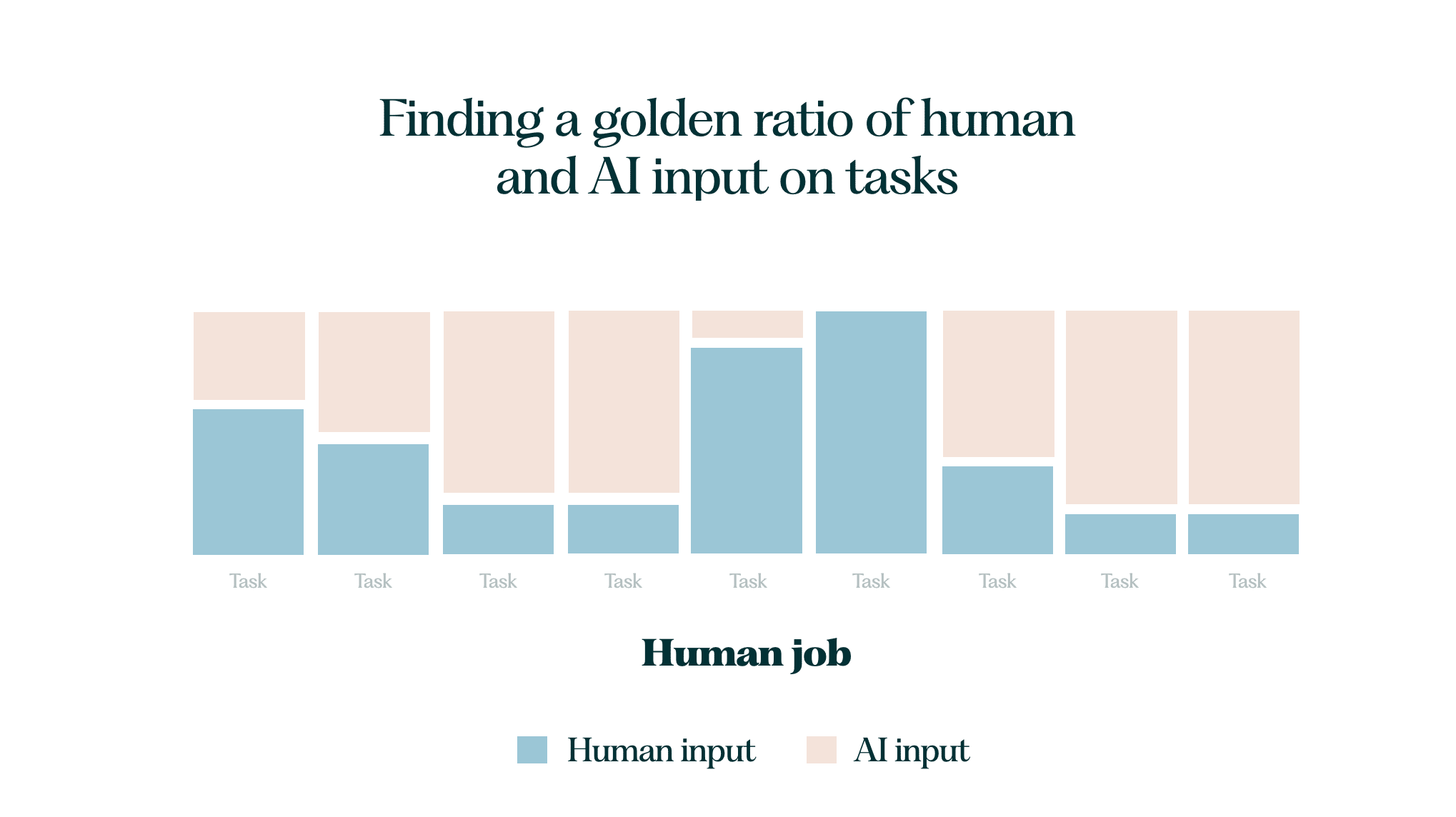Driving AI maturity in product teams
In Brief
- Design and product teams can progress from AI awareness to systematic adoption through six key tenets: Train, Experiment, Share, Contextualize, Rethink, and Measure
- Leaders play a crucial role by championing adoption, facilitating enterprise tool access, and measuring value
- Success depends on transforming AI from an “add-on” to an integrated part of core processes, supported by clear metrics and growth paths
How can design and product teams go from AI-aware to AI-driven?
I’ve helped 12 teams at companies like KONE, Futurice, Veikkaus, and Siili speed up their AI maturity and wanted to share a framework of patterns I’ve learned.
Below are six core tenets of systematically driving AI maturity in design/product teams.

1. Train
In most organizations, some people are early adopters eager to embrace a new way of working with AI. The goal of foundational training is to give a broader baseline understanding of the characteristics, opportunities, and risks of AI in their work.
Effective training combines:
- a technical foundation for a realistic understanding of AI
- high-level frameworks of effective and safe AI use based on research
- role-specific inspiring examples of AI use
- hands-on experimentation
- sharing of best practices with the team
2. Experiment
AI is mind-bendingly good at some tasks and surprisingly clumsy at others. As Wharton professor Ethan Mollick puts it, the frontier of AI capability is “jagged”.
The only way to discover that in your work is to experiment with using AI daily and ethically in most tasks.
This enables designers and product managers to find the perfect balance of AI-human input across various tasks. Some tasks will remain 100% human, but for most tasks, there’s a golden ratio of collaboration for optimal results.

3. Share
The value of experimentation and training is unlocked by systematically sharing lessons with the team. Leaders play a crucial role by visibly championing AI adoption, removing barriers, and allocating time for learning.
For instance, I’ve helped teams co-create AI Playbooks that document their unique best practices and guidelines and build momentum with visible wins.
4. Contextualize
AI becomes useful for product teams once it can tap into the vast reserves of actual company data.
Leaders should enable this business context by facilitating safe access to enterprise tools from leading frontier model companies like OpenAI or Anthropic. This requires buy-in from key stakeholders like legal and IT.
5. Rethink
A deeper layer to AI adoption is rethinking core processes, roles, and the customer experience.
This includes addressing team concerns about career impact, creating clear growth paths, and celebrating early wins. Equally important is aligning incentives and performance metrics to support this transformation, making AI adoption part of “how we work” rather than an add-on.
For instance, let’s consider rethinking the process of customer insights gathering:
- Traditional:
- 2 weeks manual interview analysis
- Individual researcher synthesis
- Limited pattern recognition
- Heavy documentation burden
- AI-Enhanced:
- Real-time interview transcription
- AI-assisted pattern recognition
- Automated insight clustering
- Researchers focus on validation and strategic implications
6. Measure
Are we extracting business value from using AI? The only way to know is to systematically measure both the adoption and results of using AI.
Building a KPI dashboard of AI adoption and results helps leaders uncover if and where the actual value is created. Regular review cycles ensure continuous improvement and help teams adapt to rapid AI evolution.
From awareness to actual results
After a few years of experimentation and excitement, this is the year of systematically driving the adoption of AI in product teams and uncovering measurable business results.
The framework above is a work in progress. I'll update it as I learn more from working with the smart folks at different companies driving this transformation.
Do you want to add anything or want to discuss this in detail? Please reply to this message to connect.
PS. This week was another step toward AI agents as OpenAI introduced their anticipated Operator agent product yesterday. I have written about how this shift will introduce new agentic customer journeys.
I’ll pick up the thread on agents next week, as we’ll discuss how we should rethink the role of users in the age of agents.
Enjoy the weekend!
- Matias


